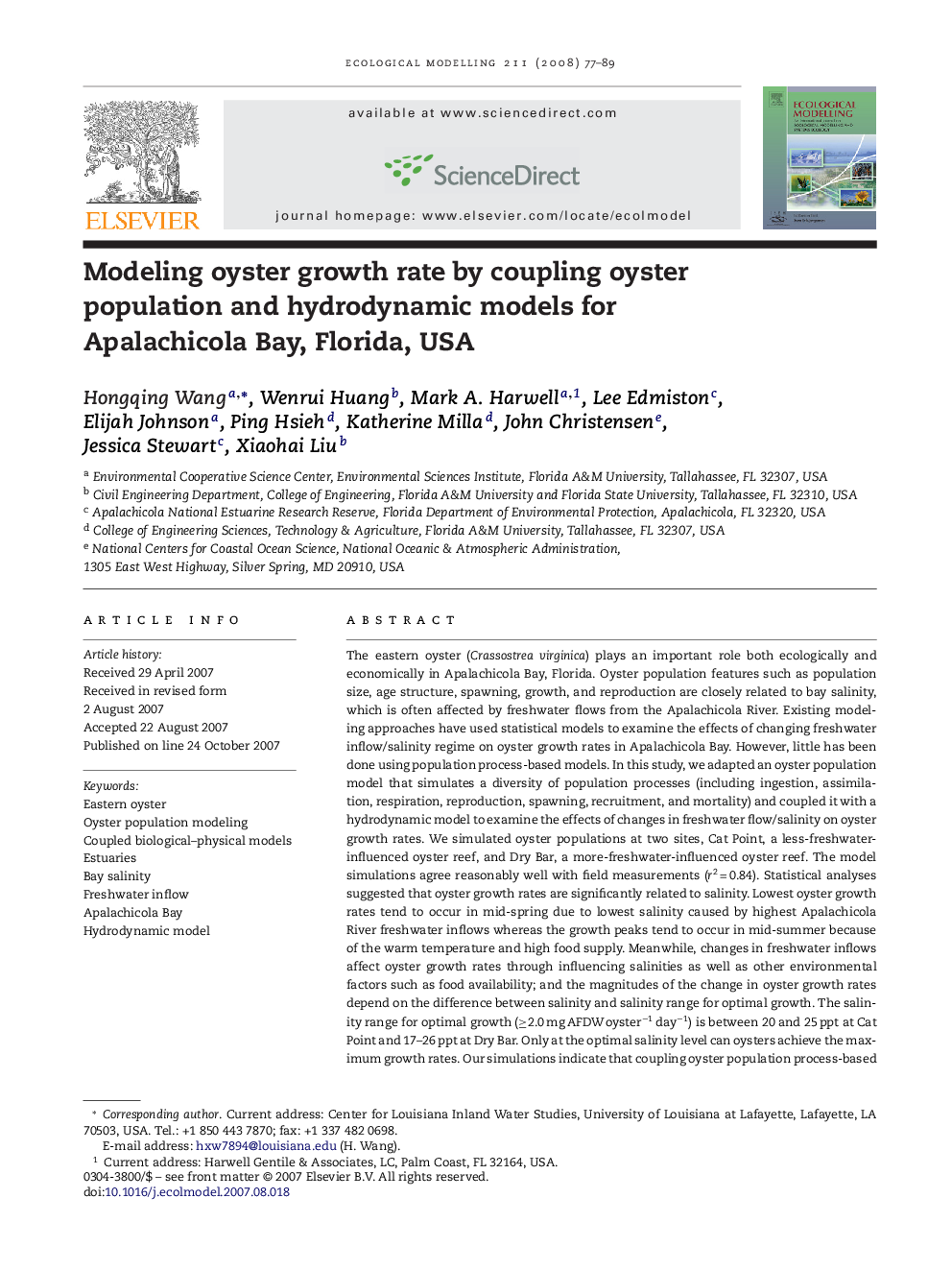| Article ID | Journal | Published Year | Pages | File Type |
|---|---|---|---|---|
| 4378260 | Ecological Modelling | 2008 | 13 Pages |
The eastern oyster (Crassostrea virginica) plays an important role both ecologically and economically in Apalachicola Bay, Florida. Oyster population features such as population size, age structure, spawning, growth, and reproduction are closely related to bay salinity, which is often affected by freshwater flows from the Apalachicola River. Existing modeling approaches have used statistical models to examine the effects of changing freshwater inflow/salinity regime on oyster growth rates in Apalachicola Bay. However, little has been done using population process-based models. In this study, we adapted an oyster population model that simulates a diversity of population processes (including ingestion, assimilation, respiration, reproduction, spawning, recruitment, and mortality) and coupled it with a hydrodynamic model to examine the effects of changes in freshwater flow/salinity on oyster growth rates. We simulated oyster populations at two sites, Cat Point, a less-freshwater-influenced oyster reef, and Dry Bar, a more-freshwater-influenced oyster reef. The model simulations agree reasonably well with field measurements (r2 = 0.84). Statistical analyses suggested that oyster growth rates are significantly related to salinity. Lowest oyster growth rates tend to occur in mid-spring due to lowest salinity caused by highest Apalachicola River freshwater inflows whereas the growth peaks tend to occur in mid-summer because of the warm temperature and high food supply. Meanwhile, changes in freshwater inflows affect oyster growth rates through influencing salinities as well as other environmental factors such as food availability; and the magnitudes of the change in oyster growth rates depend on the difference between salinity and salinity range for optimal growth. The salinity range for optimal growth (≥2.0 mg AFDW oyster−1 day−1) is between 20 and 25 ppt at Cat Point and 17–26 ppt at Dry Bar. Only at the optimal salinity level can oysters achieve the maximum growth rates. Our simulations indicate that coupling oyster population process-based models with hydrodynamic models has significant advantage over statistical models in examining the multivariable system and understanding nonlinear relationships between oyster dynamics and environmental factors.
